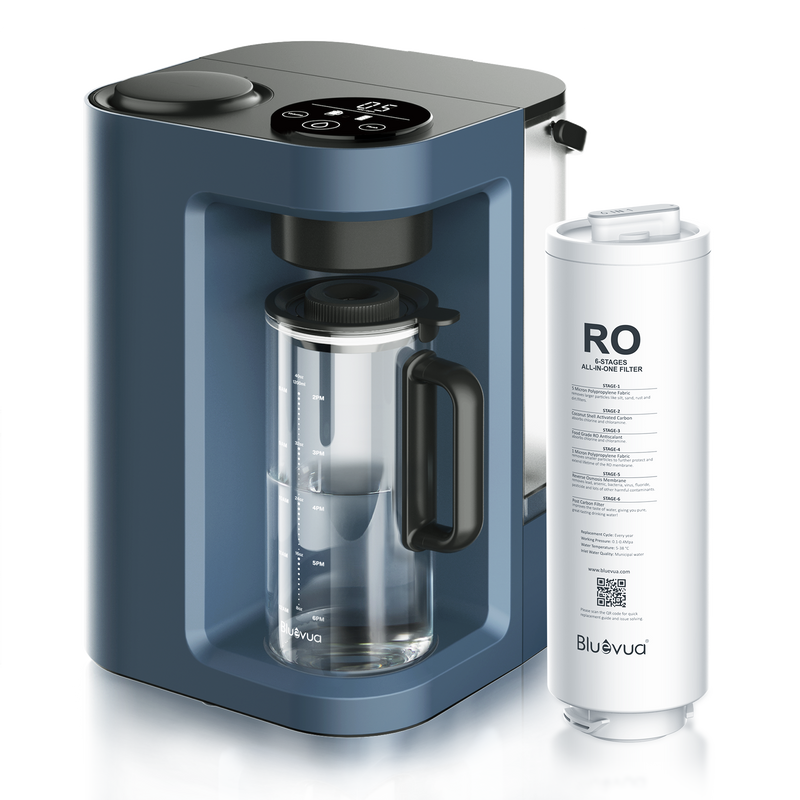Unlock Pure Water Bliss: Discover the Ultimate Solo Reverse Osmosis Filter!
In today’s world, the importance of clean water cannot be overstated. With increasing concerns about water quality, many people are turning to home water filtration systems as a solution. Among these systems, reverse osmosis (RO) filters have gained popularity due to their efficiency and effectiveness. For solo users, a reverse osmosis filter offers a convenient way to ensure access to pure water without the hassle of large, complex systems. In this article, we will delve into the features and benefits of solo RO filters, compare different models, and provide guidance on making an informed choice that fits your lifestyle.

Understanding Reverse Osmosis Technology
Reverse osmosis is a water purification technology that removes contaminants by pushing water through a semi-permeable membrane. The process begins with pre-filtration, where larger particles like sediment and chlorine are removed. Next, water is forced through the RO membrane, which has tiny pores that block impurities such as bacteria, viruses, salts, and heavy metals. This results in purified water that is free from harmful substances. The effectiveness of reverse osmosis lies in its ability to eliminate up to 99% of contaminants, making it a reliable choice for those who prioritize their health and well-being. The technology is particularly beneficial for solo users who may not need large quantities of water but still want the best quality for drinking and cooking.
Key Features to Look for in a Solo RO Filter
When selecting a solo reverse osmosis filter, several key features should be considered. Size is crucial; a compact design is ideal for individuals with limited kitchen space. Additionally, filtration capacity matters. Look for models that can efficiently provide enough purified water for your daily needs without frequent filter changes. Ease of installation is another essential feature. Many solo filters are designed for DIY installation, ensuring that you can set them up without professional help. Maintenance requirements should also be evaluated; some filters come with filter change alerts, which can simplify upkeep. Lastly, tankless options are worth considering, as they save space and provide on-demand purified water, perfect for solo users who value convenience.
Benefits of Using a Solo Reverse Osmosis Filter
Using a solo reverse osmosis filter comes with numerous advantages. First and foremost, the improvement in water quality is significant. With contaminants effectively removed, you can enjoy refreshing and safe drinking water straight from your tap. This convenience eliminates the need for buying bottled water, which can be costly and environmentally damaging. Over time, the cost-effectiveness of a solo RO filter becomes apparent, as the initial investment pays off through savings on bottled water and reduced health risks. Many users also report a noticeable difference in the taste of their water, making hydration more enjoyable. Anecdotes from friends who have transitioned to RO systems highlight their satisfaction with the taste and quality, reinforcing the positive trends among solo users.
Comparing Different Solo RO Filter Models
When comparing different solo reverse osmosis filter models, it’s essential to have a clear framework for evaluation. Factors such as performance should be a priority; consider the filtration speed and how much water the system can produce daily. Durability is another critical aspect; look for models constructed from high-quality materials that can withstand regular use. User-friendliness is equally important; features such as easy-to-read indicators for filter changes and intuitive controls can greatly enhance your experience. Lastly, consider the aesthetic design of the filter, especially if it will be a visible part of your kitchen. To facilitate your comparison, ask yourself questions like: What is the filter’s daily output? How often will I need to replace the filters? What are the warranty and support options available? These inquiries will guide you in finding the ideal solo RO filter for your needs.
Enhancing Your Water Quality Journey
In summary, investing in a solo reverse osmosis filter can significantly enhance your access to clean and safe drinking water. By understanding the technology behind RO systems, recognizing essential features, and weighing the benefits, you can make an informed decision that suits your lifestyle. Whether you prioritize convenience, cost-effectiveness, or water quality, the right solo RO filter can meet your personal needs. Embrace the journey towards better hydration and health by choosing a system that aligns with your values and preferences.








